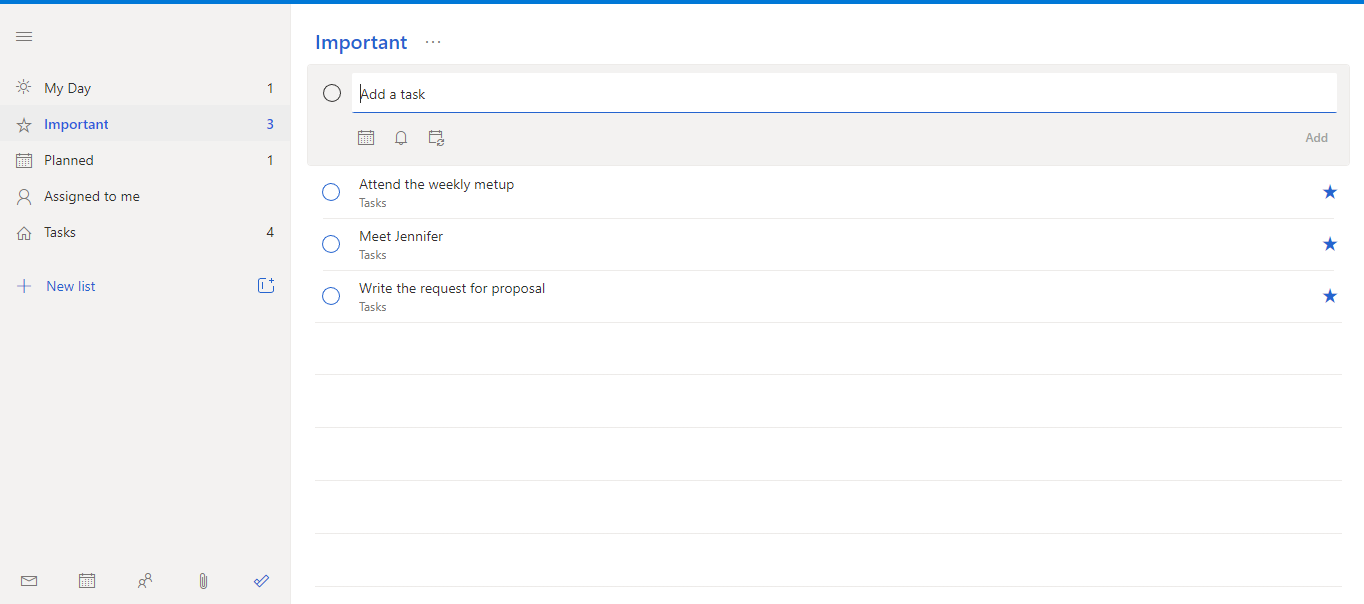Microsoft, the company, may need no introduction. It’s the American software giant whose Windows operating system powers the majority of the world’s personal computers.
The first version of Microsoft To Do (opens in new tab) was launched (as a preview) in April 2017. It wasn’t until two years later that Microsoft debuted the app’s full version. The To Do app’s interface bears a lot of resemblance to Wunderlist, a to-do-list app Microsoft purchased in 2015.
Many people around the globe say positive things about the To Do app (opens in new tab). We decided to check it out and confirm for ourselves if it’s really as good as they said.

Microsoft To Do: Plans and pricing
The primary advantage the To Do app has over its rivals is that it’s totally free. You’re not paying a dime to use the app, so take it as a favor from Microsoft. The company makes enough money from licensing software and selling hardware and, therefore, can afford to give a lot of software away for free.
Microsoft To Do: Features
To use the To Do app, the first requirement is a Microsoft account that encompasses all services the company offers. There are 1.4 billion (opens in new tab) Windows users worldwide, and you will likely have a Microsoft account if you’re one of these users. If not, it’s easy to create one for yourself. Just head to the URL account.Microsoft.com, and you can figure out the rest.
Upon launching To Do, the first feature you should notice is adding tasks. Look for the Add a Task button and click it to type in any task. After adding a task, you can set a due date for it, categorize it according to importance, or add a comment. Likewise, you can set a reminder so that the app will sound an alarm on your device when it is due
You can sort the tasks you’ve created by specific factors, including the due date, creation date, importance, or alphabetically. This feature is helpful for people who have a lot of tasks and would find it difficult to sift through them individually.

The To Do app’s sorting feature is helpful for organizing tasks, but not as good as a grouping feature, which the app lacks. For example, on Todoist (opens in new tab), a popular to-do-list app, you can group multiple tasks under one umbrella to help you stay focused.
The To Do app supports collaboration (opens in new tab) to some extent. You can invite people to join any task list through an invitation email or a direct link. But, they must have a Microsoft account to access it. There’s no view-only mode on To Do, which we consider a drawback.
Though Microsoft has promised to integrate the To Do app with its other apps, it hasn’t delivered much. The best thing you can do now is flag an email in Microsoft Outlook (opens in new tab) to have it show up as a task on the To Do app. The app has limited third-party integration, which we consider a disadvantage.
Microsoft To Do: Interface and use
The To Do app has a minimal, uncluttered interface. There’s not much you can do with the app apart from creating and sorting tasks, so you shouldn’t have any problem figuring it out.

Microsoft To Do: Support
If you encounter any challenges with the To Do app, the first place to consult is the FAQ page, which contains solutions to commonly experienced problems. This page is easily accessible on the web interface or desktop or mobile app.
You may not be satisfied with the information on the FAQ page. In such a case, you can contact Microsoft’s support team directly through live chat.
Microsoft To Do: The competition
There are countless task management apps rivaling To Do. They include popular ones such as Todoist and TickTick (opens in new tab). To Do doesn’t have as many task management features as you’ll see in these competing apps. But, it’s completely free, while the rivals are freemium or strictly paid apps.
Microsoft To Do: Final verdict
If you need a simple task management app you don’t need to pay a dime for, To Do is a perfect choice. But, you won’t enjoy as many features as you’ll get in a full-fledged task management app.
We think To Do is best for managing personal schedules. It doesn’t have suitable features for enterprise task management and team collaboration.




